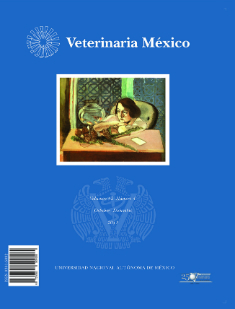Age structure, productive and reproductive behavior of a pig population reared in semi-confinement in a rural community of Morelos state, Mexico
Main Article Content
Abstract
Small-scale family swine production can be seen in thousands of small communities and suburban zones; it is characterized by breeding rural pigs in rustic facilities with basic feed and productive parameters, well below those of technologically advanced farms, with mortality reaching up to 50% of the litter. This type of production involves a large number of producers and has a critical impact on family income. At slaughter, these carcasses have a high probability of being seized because of the presence of cysticercoids (T. solium), losing a high percentage of its economic value; due to absence of slaughterhouses in rural communities, this meat is directed to consumption without health inspection, increasing the risk of transmission of this zoonosis. This paper describes the productive and reproductive characteristics of the backyard production system of pigs in a rural community. Human to pig ratio was 3:1. During the year, 308 piglets were born in 43 litters, 51.7% males and 48.3% females, with an average weight of 40.47 kg at 6 months and 65.30 kg at 10 months. They were slaughtered at 7.3 months on average. The highest death rate was found between 0 and 1 month of age. In many rural communities of Mexico pigs are fed with waste generated in homes, helping maintain the communities clean, as well as with the excreta of other species that usually roam freely, situation that can promote dissemination of parasitic diseases.
Keywords:
rural pig
Article Details
License

Veterinaria México OA by Facultad de Medicina Veterinaria y Zootecnia - Universidad Nacional Autónoma de México is licensed under a Creative Commons Attribution 4.0 International Licence.
Based on a work at http://www.revistas.unam.mx
- All articles in Veterinaria México OA re published under the Creative Commons Attribution 4.0 Unported (CC-BY 4.0). With this license, authors retain copyright but allow any user to share, copy, distribute, transmit, adapt and make commercial use of the work, without needing to provide additional permission as long as appropriate attribution is made to the original author or source.
- By using this license, all Veterinaria México OAarticles meet or exceed all funder and institutional requirements for being considered Open Access.
- Authors cannot use copyrighted material within their article unless that material has also been made available under a similarly liberal license.



